Results 3,961 to 3,970 of 12094
Thread: Anandtech News
-
06-04-14, 06:30 AM #3961
Anandtech: Apple launches iOS 8 at WWDC
Recently, Apple launched the latest iteration of iOS for its devices such as the iPhone, iPad, and iPod Touch. No hardware was announced but there's still a great deal to talk about. While iOS 7 brought major, sweeping changes in the UI side of things, iOS 8 is very much targeted at refining the operating system and adding new features. The first and possibly most emphasized point throughout the presentation was continuity. Apple continues to emphasize the importance of their ecosystem advantage, and it's especially clear here with the amount of integration that iOS has with OS X. Key features include Handoff, SMS and calls through iPad/Mac, along with automatic WiFi hotspot creation and connection.
To break things down in this area, we'll start with Handoff. In short, this feature is designed to make it possible to start writing an email, calendar event, or message on a Mac or iPad, and then continue writing without interruption on an iPhone or the other way around. This is definitely a useful feature, and while there are some potential concerns with battery life this is avoids some of the friction involved with transitioning from one device to another. However, to my understanding this requires all of the devices to be on iOS 8 and OS X Yosemite in order to work properly.
The next part of the puzzle is SMS and calls through iPad/Mac. While a similar feature has existed on Android in the form of Airdroid, it was never a natively integrated feature that way that this is. While they didn't provide specifics on how the feature works and what the limitations are, it's reasonable to infer that this works over WiFi and therefore is limited by the range of an AP or a direct connection. In short, by communicating to the iPhone or another voice-enabled cellular device on iOS 8, it's now possible to send and receive text messages with seamless integration of chat history, and the same also applies to voice calls as well. This is a solid extension upon iMessage for both iPad and Mac that was first introduced with iOS 5 and Mavericks.
Many applications also fall into the continuity theme. For example, Photos and iCloud have been integrated in order to allow seamless syncing of photos across devices, whether Mac or iOS. While much of the iCloud syncing is made to work with Windows devices as well it isn't clear whether these more seamless integration features will happen for those on Windows.
Finally, WiFi hostpot creation and connection is pretty simple in this case. If your iPhone and iPad/Mac are all linked together, you no longer have to manually create a hotspot on the iPhone or type in a password on the iPad/Mac to gain access to the personal hotspot. Instead, you can connect by simply tapping on your phone in the WiFi menu of an iOS 8 iPad or Yosemite Mac, and all of the other steps are skipped automatically.
Possibly the second most important emphasis this time around was extensibility. For a while now, Apple has been criticized by some for the sandboxed nature of applications. This sandboxed system means that it's difficult for one application to pull data from another. Apple has introduced a host of new features that will solve this problem. First, iOS 8 will introduce a new API that allows one application to use data from another. There's no specifics on this aspect, but it sounds very much like the intents system in Android from a user perspective. However, it's likely that Apple's implementation isn't quite the same. Apple showed off these features in first party applications, which included demos of third party photo editors in Apple's Photos application. Another demo featured Bing in Safari doing a live translation of the webpage without losing focus in the application. Overall, there's a great deal of promise in this move, and it'll be interesting to know how Apple did this while maintaining the sandboxed security system.
Within that same thought, extensibility also means that third party keyboards can be fully functional on iOS. In short, applications like SwiftKey and Swype can now replace the stock iOS keyboard although there's a disclaimer that keyboards with internet access could track keystrokes and upload them to another location over the internet.
Apple has also tried to integrate widgets into iOS 8 without fundamentally reworking how the UX works. In short, there are third party widgets now, but they are integrated into the Today page of the notification drawer, rather than on SpringBoard. Apple showed off some interesting possibilities for this, such as an Ebay widget that allowed bidding straight for the widget and live updates to scoreboards for sports.
Apple has also opened up TouchID to third party developers. This means that TouchID can be used in place of a password in just about any situation. Apple stressed that no data is ever exposed to third party applications so it's not possible to view stored features through this API.
While Samsung was first to announce their health platform, it seems that Apple is the first to truly implement that vision. HealthKit also fell under the theme of extensibility. This is because its key feature set was focused upon allowing multiple health applications to all place their data into a single application that can present all recorded health measures at once. Apple emphasized the value that this application would provide to doctors, and by partnering with Epic Systems and Mayo Clinic, they've created systems that can automatically inform a doctor when various measures of health go out of specification for a specific person. This allows for faster response to potentially unhealthy situations. This will all be accessed through the Health application, which will first appear in iOS 8.
Outside of the themes of continuity and extensibility, Apple has also iterated on other parts of the iOS 8 platform. The new Photos application adds automatic image interpretation for more seamless editing, so editing levels is now a simple slider that simultaneously adjusts settings such as exposure, brightness, contrast, shadows, highlights, midtones, etc. This is definitely a great way to bring photo editing to the masses, as while such options are still accessible the vast majority aren't particularly interested in learning how to adjust multiple sliders to achieve a desired effect. Apple also emphasized that all edited photos can be instantly viewed on all other iOS and Mac devices through their respective Photos applications, using iCloud integration as previously mentioned.
Siri has also been upgraded, and with iOS 8 it will support Shazam song recognition features, along with iTunes purchases. Apple cited the example of buying a song that was recognized through Shazam on Siri as a key use case for this feature. It's also possible to do live dictation of text through Siri, and with 22 new languages available for dictation. Hotword detection is also introduced here, although it doesn't appear that Siri can be activated with the screen off. Apple may add screen-off hotword detection in a future product, although I wouldn't hold my breath.
China also received a special section, with new vector maps and turn by turn navigation in Apple Maps for China. There's also support for the lunar calendar, and improved predictive input for the Apple default keyboard, along with better weather data in the Apple application.
Spotlight search is also updated with new information provided with searches. Spotlight now presents results from both internet and local sources, and there are a lot more features for specific use cases. If this sounds like the result cards from Google Search, this is effectively a feature with similar intent. However, Apple has done more to integrate the results into the search application rather than a web view, and third party application data can be pulled into the search results to present more actionable information.
Outside of these smaller changes, Apple also announced Family Sharing, a system that allows up to six people to share applications, books, music, movies, and other media without an additional charge. The key requirement here is that all of the devices have to share the same credit card on file to avoid abuse. Apple also went further with the family theme, and added in a feature that requires purchases from a "child" device to be approved by a "parent" device to avoid a situation where a child spends large sums of money on in app purchases without prior approval.
Apple has also introduced actionable notifications to improve the current system. While a minor feature, it's very much a useful touch and sorely needed. This means that it's now possible to respond to incoming messages without leaving the application in use. The multitasking menu has also added new recent contacts on top of the list of active applications to allow fast access to certain contacts for phone, texts, and video calls.
Messaging also improves, with a new details section that allows you to share your location for certain amounts of time, leave group threads as desired, and also set turn off certain threads from notifications for a designated amount of time. There's also a new attachment view that lets you see all the photos and similar attachments in one view instead of scrolling through a thread, and voice messages/video messages are seamlessly integrated with automatic deletion to save space, although it's still possible to save it if desired.
Overall, Apple has definitely done a great job with iOS 8. We're excited to see how well this update plays out in the coming months in the context of the broader mobile OS landscape, and also to see what else will be discovered from beta to public availability. While hardware wasn't talked about at all for this presentation, it doesn't seem as necessary as some make it out to be.
More...
-
06-04-14, 11:01 AM #3962
Anandtech: Computex 2014: Crucial Shows Ballistix Elite DDR4
Obviously one of the biggest topics of Computex this year is DDR4. Crucial will be bringing their DDR4 to the consumer market under the Ballistix Elite brand with speeds of 2666MHz and 3000MHz in the beginning. The modules themselves will be 4GB or 8GB at first, although kits will range all the way to up to 32GB (4x8GB). The latencies are still up in the air as the product isn't finalized yet but from what I have heard the latencies will be about CL15 at first, although it's certainly possible that there will be different models with different latencies available. Availability is slated for August but pricing has yet to be announced.
The big thing about DDR4 is that it comes with a lower voltage of 1.2V compared to 1.5V that DDR3 uses by standard. That will result in lower power consumption, which ultimately means longer battery life for mobile devices. In addition, DDR4 is also bringing higher speeds because right at the beginning we are going to see products at 3000MHz, although Crucial told me that they have been able to get the modules to run at up to 3200MHz, so we might see even faster modules pretty soon. DDR4 will also bring support for higher densities (4Gb vs 1Gb), which will allow bigger for higher capacity DIMMs. While Crucial's offerings will be limited to 8GB at launch, they (well, Micron) has quad rank server DIMMs that go to up to 32GB but only at 2133MHz.
In addition to DDR4, Crucial also had the MX100 at their suite. We already reviewed the drive earlier this week when it officially launched, so there isn't really anything new to share, but Crucial was able to tell me that they are working on an SSD toolbox that should be available within a few months (I was told around September). This has been one of the only things missing from Crucial's SSDs, so it's great to see that they are responding to the public demand. The supply of MX100 should also be a lot better than the M500 when it launched, meaning that you shouldn't see any sold out tags at every retailer.
More...
-
06-04-14, 12:00 PM #3963
Anandtech: Computex 2014: ADATA Shows XPG Z1 DDR4 At 3200MHz
I spent quite a bit of time at ADATA's booth this year as I had a meeting with their president along with the directors of their SSD and memory marketing teams. I'll be doing separate articles of those discussions along with the other products I saw at their booth since there was a lot of information to digest, so for now I'll just cover the DDR4 as that was definitely the most interesting part.
Similar to Crucial, ADATA's big thing to show was their DDR4. ADATA is one of the few OEMs that will be ready with their DDR4 once Intel's X99 platform ships and they will have a relatively wide range of products available. Their DDR4 solutions will start at 2133MHz and will go all the way to up to 3200MHz, which is 200MHz faster than what Crucial will be releasing at launch. The latency rating for the 3200MHz will be CL16 but at 2133MHz and 2400MHz ADATA will offer latencies of as low as CL12. ADATA also emphasized that they have focused on the overclockability, so it will be interesting to see what kind of speeds can be reached. Kits of 8GB (2x4GB) and 16GB (2x8GB) will be available and you should expect to see them hit retail as soon as the X99 does.
ADATA also had some enterprise DDR4 at their booth with capacities of up to 16GB at 2133MHz (CL15). There was also a very low-profile version with a maximum capacity of 8GB, which is mainly aimed for blade servers and other environments that are very space conservative.
What was really interesting was their 32GB DDR3 module. There is some patented technology behind this from another company that has a strategic alliance with ADATA but I'll cover that in more detail when I get back home since it really requires a more in-depth look.
Stay tuned for more news of what ADATA had on display at their booth, including some SandForce SF3700 coverage!
More...
-
06-04-14, 08:31 PM #3964
Anandtech: Computex 2014: GIGABYTE’s Liquid Nitrogen Memory Overclocking Motherboard,
Taking a track day car to an event for regular road vehicles seems a bit unfair from the point of view of the regular drivers, however in order to be the best you need to end up with specialized components. Eventually you end up competing against other purpose built machines in order to be the best. Up until this point in the motherboard space, we had seen extreme overclocking on commercial products. Now we have that track racer for extreme overclocking in the GIGABYTE Z97X-SOC Force LN2.
The big thing to notice is the lack of CPU mounting holes. This allows the memory slots to be closer to the CPU for improved signaling, but it also means that cooling is limited to copper pots for liquid nitrogen cooling.
The base design is a regular Z97X-SOC Force, and it was used in the Intel OC Challenge event at Computex by the GIGABYTE team. GIGABYTE’s team, featuring in house overclocker HiCookie as well as Dinos22, sin0822 and Sofos, won the highest LN2 frequency and LN2 memory frequency results to take home a cool $5800.
GIGABYTE do plan on selling the Z97X-SOC Force LN2 in the market, although the initial limited run will be 100 units only. Should these sell out and generate enough interest, GIGABYTE may create some more. Pricing has not yet been announced.
More...
-
06-04-14, 09:30 PM #3965
Anandtech: Computex 2014: X99 on Display from ASRock
ASRock hosted a VIP media function at Computex yesterday and we were lucky enough to get front row seats. The main talking point of the day was the new 9-series motherboards, including a couple of new models aimed at the cheaper end of the overclocking market due to the release of Intel’s Pentium Anniversary Edition (an Intel spokesman at the event called it Pentium-AE, which I guess puts an official easy name into the zeitgeist). The more interesting element of ASRock’s display was a pair of X99 motherboards on show, the Extreme4 and Extreme6.
These boards, I was told, are near final production units. In fact they had a PVT model running DDR4 on the show floor, but not at their booth, so we will have to keep an eye out for that. From looking at these motherboards, storage is now fully SATA 6 Gbps, USB 3.0 is now native and we still have 40 lanes of PCIe 3.0.
The new socket is definitely LGA2011-3, with a slightly new protective plate over the socket. We have quad channel memory, with X99 at two DIMMs per channel. I have seen some other LGA2011-3 mockups elsewhere on the show floor (which I can’t write about, unfortunately), with three DIMMs per channel, although this might be restricted to server motherboards.
I eagerly await X99 and Haswell-E, especially with the wealth of DDR4 on display this year.
Gallery: Computex 2014: X99 on Display from ASRock
More...
-
06-04-14, 10:00 PM #3966
Anandtech: The AnandTech Mobile Show: Computex 2014 Edition
Yesterday Intel held a press briefing to go over some of the PC client and mobile news from the show, but after the briefing Intel gave us access to their stage and camera crew to film our mobile show. I didn't make it out to Taipei until after WWDC, but Ian and Kristian have been on the ground all week covering the show. Ian joined me on stage for a quick recap of a lot of what's new in mobile. We went over Ian's experience with LG's G3, Intel's new Bay Trail Entry SKUs, the Rockchip deal, Core M, the WWDC news and a discussion about deeper gaming experiences in mobile.
Check out the show in the video below:
More...
-
06-05-14, 04:45 AM #3967
Anandtech: The AnandTech Podcast: Episode 29 - Computex 2014 Mobile Show
After a month off the AT Podcast is back once again. This time we have our recent AnandTech Mobile Show in podcast form.
Recorded live from Computex 2014, on this episode Anand Shimpi & Ian Cutress discuss recent developments at WWDC, Computex, and in the mobile market. Anand & Ian kick things off with a discussion of LG's new G3 phone, along with side discussions on ideal phone sizes and finishes. Then on to Intel's recent Baytail tablet announcements and Rockchip partnership. This is followed with an in-depth discussion of various WWDC happenings, including iOS 8, OS X Yosemite, Apple's Metal API, Continuity, and mobile gaming in general. Wrapping things up is a look at the mobile market in general, along with Intel's Computex announcement, the Core-M.
The AnandTech Podcast - Episode 29
Featuring Anand Shimpi & Dr. Ian Cutress
iTunes
RSS - mp3, m4a
Direct Links - mp3, m4a
Total Time: 48 minutes 10 seconds
Outline h:mm
LG G3 - 0:00
Side Discussion: Phone Size - 6:30
Phone Finish - 12:00
Intel Baytrail Tablets - 14:10
Intel Rockchip Partnership & SoFIA - 18:30
Apple WWDC Recap - 24:30
Apple Metal API - 27:00
Mobile Gaming - 30:30
iOS/OS X Continuity - 37:00
Cloud Storage - 40:20
WWDC In Conclusion - 42:30
Intel Core-M: 45:00
More...
-
06-05-14, 05:30 AM #3968
Anandtech: Computex 2014: AMD Demonstrates First FreeSync Monitor Prototype
Our very own Anand Shimpi just got off of the Computex showfloor for a bit after paying a visit to AMD’s booth. Among the items AMD is showing at Computex is the current status of their FreeSync project, whose base feature of Adaptive Sync was recently added to the DisplayPort 1.2a standard as an extension.
First announced at CES 2014, FreeSync is AMD’s take on variable refresh monitors, utilizing some variable refresh functionality first designed for embedded DisplayPort (eDP). At the time AMD was showing off the concept on laptops (due to the need for eDP) but are back at Computex with an update on the project.
Here at Computex AMD is showing off the first prototype monitor that is FreeSync capable, which interestingly enough is based on a retail monitor that was hardware capable and could be converted with updated firmware. AMD’s actual demo hasn’t changed – they’re still running the fan blade demo we saw at CES 2014 – but it’s now running on external monitors. The monitor in question operates with a fairly narrow range of rates of just 40Hz to 60Hz, which for the purposes of a prototype is good enough to showcase that the technology works, though it is narrower than the refresh ranges AMD is expecting for retail monitors.
At this point AMD is emphasizing that while they were able to get FreeSync up and running on existing hardware, owners shouldn’t be expecting firmware updates as this is very unlikely to happen (though this is ultimately up to monitor manufacturers). Instead AMD is using it to demonstrate that existing panels and scalers already exist that are capable of variable refresh, and that retail monitors should not require significant/expensive technology upgrades. Meanwhile AMD is also holding to their earlier projection of 6-12 months for retail monitor availability with retail prototypes expected around September, which puts final retail availability potentially as early as very late this year, but more likely into the first half of 2015.
Finally we have a video interview of the FreeSync demo in action. It bears mentioning that YouTube is limited to 30fps, so while we can give you some idea of what FreeSync performs like it’s not a fully capable representation. That will have to wait for closer to release when we can sit down with a high speed camera.
More...
-
06-05-14, 12:00 PM #3969
Anandtech: Best Smartphones: Spring 2014
The major product launches for this spring are now behind us. This gives us the opportunity to evaluate the current smartphone market and identify the best smartphones in that market. We’ll break this down into a few categories, as well as cover Android and Windows Phone separately. If you’re on iOS, or leaning that way, then there’s not much to say as clearly the iPhone 5S is the current high-water mark for iOS phones. Only devices that are currently available will be on this list. Those devices that have been announced but not yet released will be eligible for the next version. We're hoping to add this as a regular feature going foward, so please don't hesitate to send us feedback. Timing of course will depend on product launches and appropriate test time with the devices.
We test a lot of smartphones at AnandTech, and as far as I can tell there has yet to be a perfect product. Generally compromises are made on some aspects of the device. There is no way we can cover every single way anyone can use a device, so when it's named the best, that doesn't mean it's the best for everyone, but hopefully it's the best for the majority. Devices named the best will always have their flaws, and if those flaws fall right into your requirements, it may not be the best device for you.
We'll break each operating system group into four segments which are flagship, phablet, mid-range, and low cost. Flagship models will be the ultimate device from each manufacturer, and in theory should have no compromises. The phablet category is for the extra large screen phones, generally at or around 6" in display size. Mid-range phones will be compromised somewhat to reach a lower price point, but should still be a powerful, fully featured device. Finally, the low cost segment will be for the phones which are low cost, but still deliver a good smartphone experience.
Android
Let’s start off the discussion with Android. This year there has been another move to the next biggest and best SoC, which in this case is the Qualcomm Snapdragon 801. While only a speed bump in actual clock speeds of the four Krait cores, the entire SoC got many small improvements, including eMMC 5.0, and a new silicon revision which resulted in a SoC which was more powerful, but also easier on the battery.
Flagship Device: Samsung Galaxy S5
This was likely the hardest category to choose right now, and for all of the wrong reasons. It was a close competition between the HTC One (M8) and the Samsung Galaxy S5, but right now the edge is going to Samsung. The HTC is far and away better in the design department. It also has much better speakers and audio amplifier than the GS5, but unfortunately the HTC camera is only OK, and on a flagship device, that’s not good enough. The display accuracy of the HTC is also still a disappointment, especially when the competition is starting to calibrate their displays. So enough about HTC. What gives the edge to Samsung right now? Obviously the display is better calibrated. The camera, at 16 MP and with ISOCELL, takes better overall images, but does lose to the Ultrapixel on the M8 in low light scenarios. The GS5 can also shoot 4k video, which while not important to everyone, it’s a tick box that’s unfilled on the HTC with only a 4 MP rear shooter. And while I’m not a big fan of plastic doors on charging ports, the door does factor into the IP67 rating of the GS5 for dust and moisture protection. Add in the bonus of a removable battery, and the GS5 just squeaks past the HTC One.
Like I said – it was very close, but only because neither device has it all. If the speakers on your smartphone are more important to you, then the HTC wins hands down.
Phablet: Samsung Galaxy Note 3Samsung Galaxy S5 Specifications Height 142 mm Width 72.5 mm Depth 8.1 mm Weight 145 g CPU MSM8974ACv3 2.45 GHz
(Quad Core Krait 400)GPU Adreno 330 RAM 2 GB LPDDR3 NAND 16/32 GB NAND
microSDCamera 16MP (5132 x 2988) Rear Facing with 1.12 µm pixels, 1/2.6" CMOS size, 31 mm (35mm effective), 2MP FFC Display 5.1” 1080p SAMOLED HD Battery 10.78 Whr Price $749 (16 GB)
Currently N/A (32 GB)
Samsung has another win here with the Galaxy Note 3. The S Pen is a key feature of the Note series, and it’s well executed. While the Note hasn’t been refreshed to the latest Snapdragon SoC, it still packs in a Snapdragon 800, and with everything else you’d expect from a device like this – 802.11ac Wi-Fi, a good (but not amazing) camera, and of course the 5.7” 1080p display. Following in Samsung tradition, the back panel is removable which gains access to the microSD and removable battery.
Mid-Range: LG Google Nexus 5Samsung Galaxy Note 3 Specifications Height 151.2 mm Width 79.2 mm Depth 8.3 mm Weight 168 g CPU MSM8974AB 2.3 GHz
(Quad Core Krait 400)GPU Adreno 330 RAM 3 GB LPDDR3 NAND 16/32 GB NAND
microSDCamera 13MP Rear Facing with 1.12 µm pixels, 1/3.06" CMOS size, 31 mm (35mm effective) F/2.2 4k30, 2MP FFC Display 5.7” 1080p SAMOLED HD Battery 12.1 Whr Price $570 (16 GB)
$600 (32 GB)
It’s tough to compete against someone who’s not out to make money. That’s certainly the case here, and Google’s Nexus 5 wins for best midrange phone. It’s a lot of phone for the money, with the 5” 1080p display, Snapdragon 800, and a decent camera. Google might have some competition in this space though with another company that’s decided it’s not out to make money, but the OnePlus One is not officially available yet so we won’t compare it right now.
Where else does the Nexus 5 do well? The display is well calibrated out of the box, there is 16 GB of internal NAND with an inexpensive upgrade to 32 GB, and it’s fully unlocked.
Low Cost: Motorola Moto GGoogle Nexus 5 Specifications Height 137.84 mm Width 69.17 mm Depth 8.59 mm Weight 130 g CPU 2.26 GHz MSM8974
(Quad Core Krait 400)GPU Adreno 330 RAM 2 GB LPDDR3 NAND 16/32 GB NAND Camera 8 MP with OIS, AF, LED flash, 1.3 MP front facing Display 4.95" 1920x1080 HD IPS LCD Battery 8.74 Whr Price $349 (16 GB)
$399 (32 GB)
Affordable is the name of the game here. Motorola has proven you can get a good smartphone for a low price with the Moto G. For $179 off contract, you get a 4.5” display at 1280x720, Snapdragon 400, 8 GB of NAND, and all in a very nice chassis that feels great in the hand. If you’re willing to spend another $20, you can get bumped up to 16 GB of NAND. It’s a lot of phone for the money, and clearly you are giving up features on a device with a price like this, such as a great camera, but battery life is good, performance is good, and the price is low. The LTE version costs $219, but drops the NAND back to 8 GB, however it does offer microSD expansion whereas the regular Moto G doesn’t offer expandable storage.
Windows PhoneMotorola Moto G Specifications Height 129.9 mm Width 65.9 mm Depth 11.6 mm Weight 143 g CPU MSM8x26 1.2 GHz
(Quad Core Cortex A7)GPU Adreno 305 RAM 1 GB LPDDR3 NAND 8/16 GB NAND Camera 5 MP w/AF, LED Flash, 1.3 MP FFC Display 4.5" LCD 1280x720 Battery 7.9 Whr Price $179 (8 GB)
$199 (16 GB)
On the Windows Phone side, things are a bit easier. Although Microsoft is trying to change this, right now the market is Nokia, and pretty much nothing else. Luckily for Windows Phone fans, that’s not really a bad thing since Nokia has made some nice devices. The Windows Phone side is generally behind Android on hardware specs, although with the latest releases it’s only slightly behind with the best devices offering Snapdragon 800 rather than the 801 of the most recent Android devices. Let’s take a look at the picks.
Flagship Device: Nokia Lumia 930 (Icon)
Right now, the flagship Windows Phone is an easy choice. The Nokia Lumia 930 is a 5” 1080p phone packing a quad-core 2.2 GHz Snapdragon 800. This phone is sold as the Lumia Icon in the USA, but globally it’s known as the 930. As with most Nokia high end phones, the camera is excellent, with a PureView 20MP rear shooter which can deliver lossless zoom and high quality photos. It also contains four patented High Amplitude Audio Capture (HAAC) microphones for high quality stereo recording. The device comes with 32 GB of internal storage, but unfortunately has no microSD card support. With 2 GB of RAM, Qi wireless charging, and a svelte polycarbonate body, this device almost has it all when compared to other Windows Phone devices with the one glaring omission of no Glance Screen support despite the AMOLED display. Still, it’s an easy pick.
Phablet: Nokia Lumia 1520Nokia Lumia 930 (Icon) Specifications Height 137 mm Width 71 mm Depth 9.8 mm Weight 167 g CPU MSM8974 2.2 GHz
(Quad Core Krait 400)GPU Adreno 330 RAM 2 GB LPDDR3 NAND 32 GB NAND Camera 20 MP PureView OIS 1/2.5" F/2.4 Dual LED, 1.2 MP FFC Display 5" AMOLED 1920x1080 Battery 9.2 Whr Price $599 (32 GB)
Also an easy selection is the Windows Phone phablet. The Nokia Lumia 1520 was the first Windows Phone device to utilize the Snapdragon 800, and with it’s also the first 6” device running Microsoft’s phone operating system. Since the only other 6” device is the lower spec Lumia 1320, we have a clear winner. The 1520 shares a lot in common with the later released 930 including the SoC, but as an added bonus the 1520 supports microSD cards in addition to the 16 or 32 GB of internal NAND. The display on the 6” phone is LCD rather than AMOLED on its smaller brother, but it does support Nokia’s Glance screen for notifications when the display is off. All 1520s other than the ones sold by AT&T also include built in Qi wireless charging.
Mid-Range: Nokia Lumia 1020Nokia Lumia 1520 Specifications Height 162.8 mm Width 85.4 mm Depth 8.7 mm Weight 209 g CPU MSM8974 2.2 GHz
(Quad Core Krait 400)GPU Adreno 330 RAM 2 GB LPDDR3 NAND 16/32 GB NAND
microSDCamera 20 MP PureView OIS 1/2.5" F/2.4 Dual LED, 1.2 MP FFC Display 6" IPS LCD 1920x1080 Battery 12.9 Whr Price $575 (32 GB)
There is more competition in this range of devices than anywhere else. Unfortunately, there haven’t been any updates to any mid-range devices since summer last year, so now’s not a great time to buy a mid-range Windows Phone. The HTC 8X was a launch device for Windows Phone 8, and has a fantastic feel in the hand, and Nokia launched a couple of successors to the Lumia 920 which could be considered as well such as the lightweight 4.5” Lumia 925, but my selection (bearing in mind I already said it’s not a good time to buy) is the Lumia 1020. Launched in July 2013, there is still no other phone on the market that packs as much camera into a smartphone, so if this is your price range, you may as well go for that. The Lumia 1020 comes with a massive camera both in size, as well as pixel count. At 41 MP, and 1/1.5”, it’s simply way larger than any other smartphone camera on the market today. Internals though are decidedly last generation with a Qualcomm Snapdragon S4 (dual-core Krait, 1.5 GHz), 2 GB of memory, and 32 GB of storage with no expansion options. The AMOLED screen is a 1280 x 768 resolution and supports Nokia Glance. Wireless charging is absent on this model, but can be added with a case. It’s not the most powerful phone in the world, but it does have a fantastic camera.
Low cost: NokiaNokia Lumia 1020 Specifications Height 130.4 mm Width 71.4 mm Depth 10.4 mm Weight 158 g CPU MSM8960 1.5 GHz
(Dual Core Krait)GPU Adreno 225 RAM 2 GB LPDDR3 NAND 32 GB NAND Camera 41 MP PureView OIS 1/1.5" F/2.2 Dual LED/Xenon, 1.2 MP FFC Display 4.5" AMOLED 1280x768 Battery 7.6 Whr Price $440 (32 GB)
The low cost segment is also tricky, but it basically boils down to two devices. First is the Lumia 520. The Lumia 520 kind of took the Windows Phone market by storm last year. With an asking price often times well under $100 off contract, it quickly became the number one selling WP8 device by a large margin. However, I’m giving the pick to something that’s slightly less compromised, and only slightly more money. The Lumia 630 is a just launched phone, packing a Snapdragon 400 quad-core Cortex A7 at 1.2 GHz, a 4.5” display with ClearBlack (a polarizing layer on the screen to improve both sunlight readability, and overall black levels), and an optional dual-SIM model. Internal storage is 8 GB, with microSD expansion. RAM on this device is a lowly 512 MB, which will restrict some apps from running on the device, and there is no LTE available on the 630. You can get LTE on the slightly more expensive 635. At $159 MSRP for the 630, or $169 for the dual-SIM model, it’s a great way to get into the Windows Phone world for a low price. I’m picking it over the 520 for a few reasons. First, it’s got a better SoC even though they have the same amount of RAM. Second, it has the ClearBlack polarizer, which is missing on the 520 and really makes a big difference in black levels as well as readability outside. Third, it’s only slightly more money.
Please note that all prices quoted are either MSRP, or current sale prices from major retailers. All prices are quoted off-contract, and local prices may vary.Nokia Lumia 630 Specifications Height 129.5 mm Width 66.7 mm Depth 9.2 mm Weight 134 g CPU MSM8x26 1.2 GHz
(Quad Core Cortex A7)GPU Adreno 305 RAM 512 MB LPDDR3 NAND 8 GB NAND
microSDCamera 5 MP 1/4" F/2.4 Dual LED, No FFC Display 4.5" IPS LCD 854x480 Battery 7 Whr Price $159 (Single SIM)
$169 (Dual SIM)
More...
-
06-05-14, 12:31 PM #3970
Anandtech: Google Announces Project Tango Tablet Dev Kit with Tegra K1 and 3D Capture
Google recently announced their new Project Tango Development Kit, a 7" tablet with a unique twist. At present this is a device for developers, scientists, and other research-oriented groups more than something for end users, but as with most Google projects the end goal is obviously to help create something that will end up being a useful addition to a retail product. You can read more about Project Tango, but the main point of interest is that the devices contain hardware and software that allows them to track and map 3D environments. Google states that the sensors make over a quarter million 3D measurements every second, updating its position and orientation in real-time.
It seems like if Google gets enough of these things running around the world, they could combine all that data into an impressively detailed 3D map of the entire world (well, the populated parts at least). Google Earth could certainly benefit from that sort of data, but there are plenty other uses for such technology as well. NVIDIA's blog on the subject notes that games could map out your living room (or yard, office, neighborhood, etc.), or a real estate agent (or architect) could use it to create a 3D model of a house/building and provide a virtual walkthrough for clients. Uses in the robotics field are another option, and robotics research has already seen great benefits of integrating Microsoft's Kinect sensor into various designs.
Along with the new information on Project Tango comes the announcement of the latest development kit hardware. (Note that this is the second Project Tango device; the first was a smartphone.) Compared to many tablets currently out there, the specs are quite impressive: NVIDIA Tegra K1 SoC, 4GB RAM, 128GB storage, and of course all the sensors needed to track motion and map environments. Basically, imagine a tablet/smartphone with Kinect-style sensors integrated into the product. The device itself is a 7-inch tablet, though the screen resolution wasn't divulged, and it will be running the latest version of Android (KitKat 4.4).
If that sounds enticing, there are two more items you'll need to know: first is that the development kits will be made available "later this year", so this is not yet shipping hardware. Second, the cost of the development kit is $1024 (a nod to computer geeks and our infatuation with powers of two, I suppose). NVIDIA sent along two rendered images of the Project Tango tablet, showing black and white casings.
More...
Thread Information
Users Browsing this Thread
There are currently 16 users browsing this thread. (0 members and 16 guests)





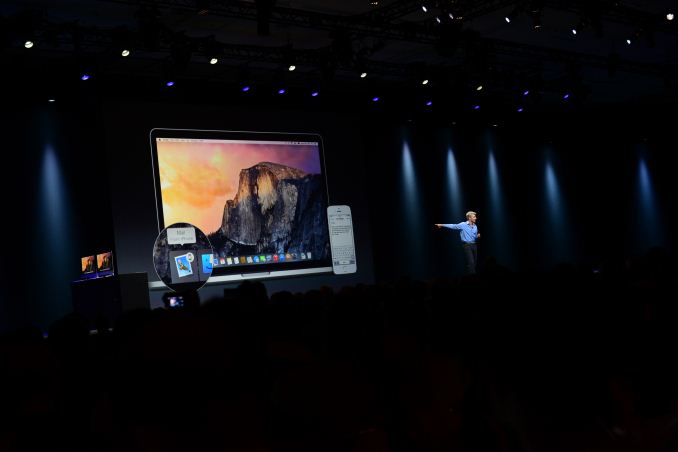
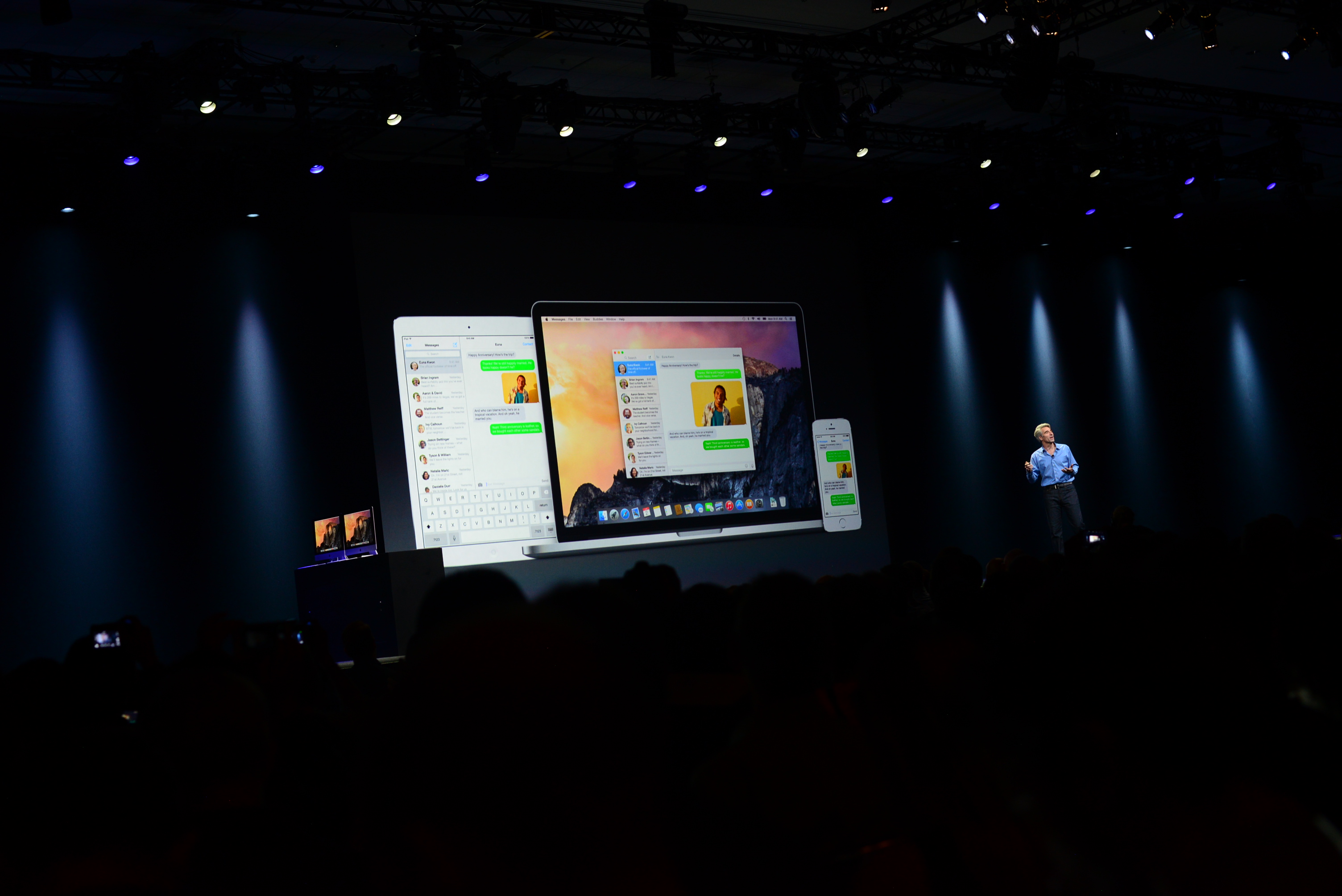
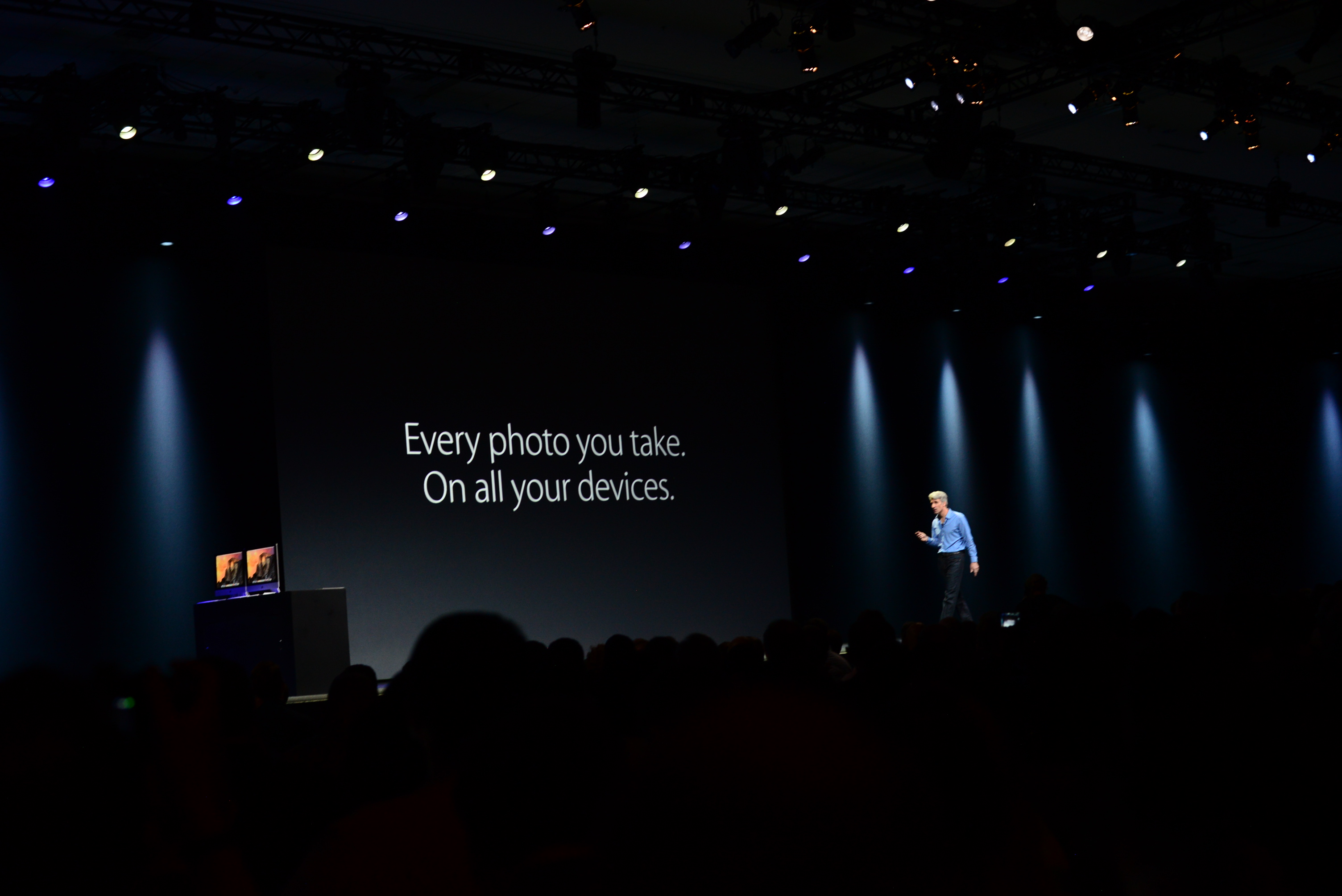
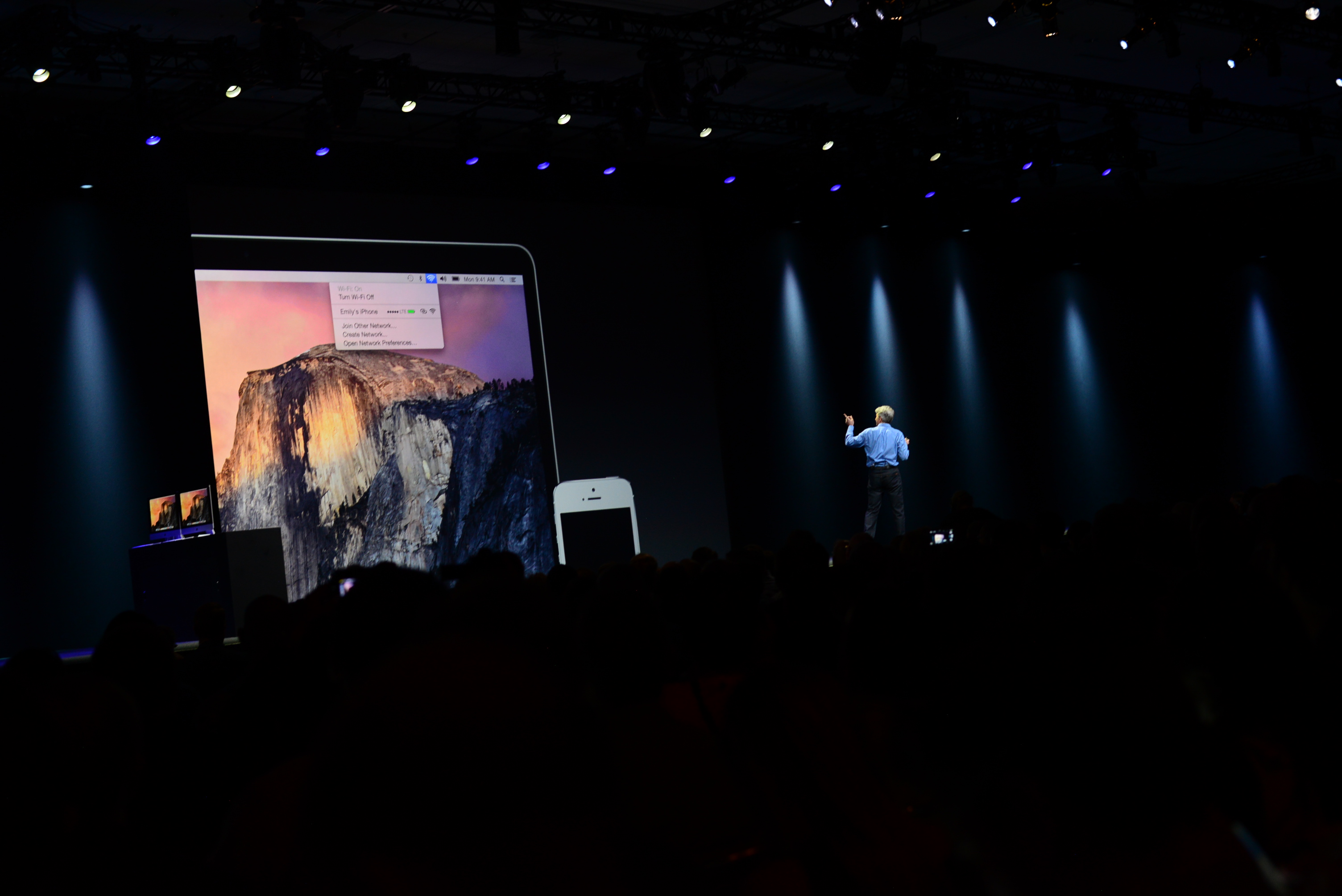
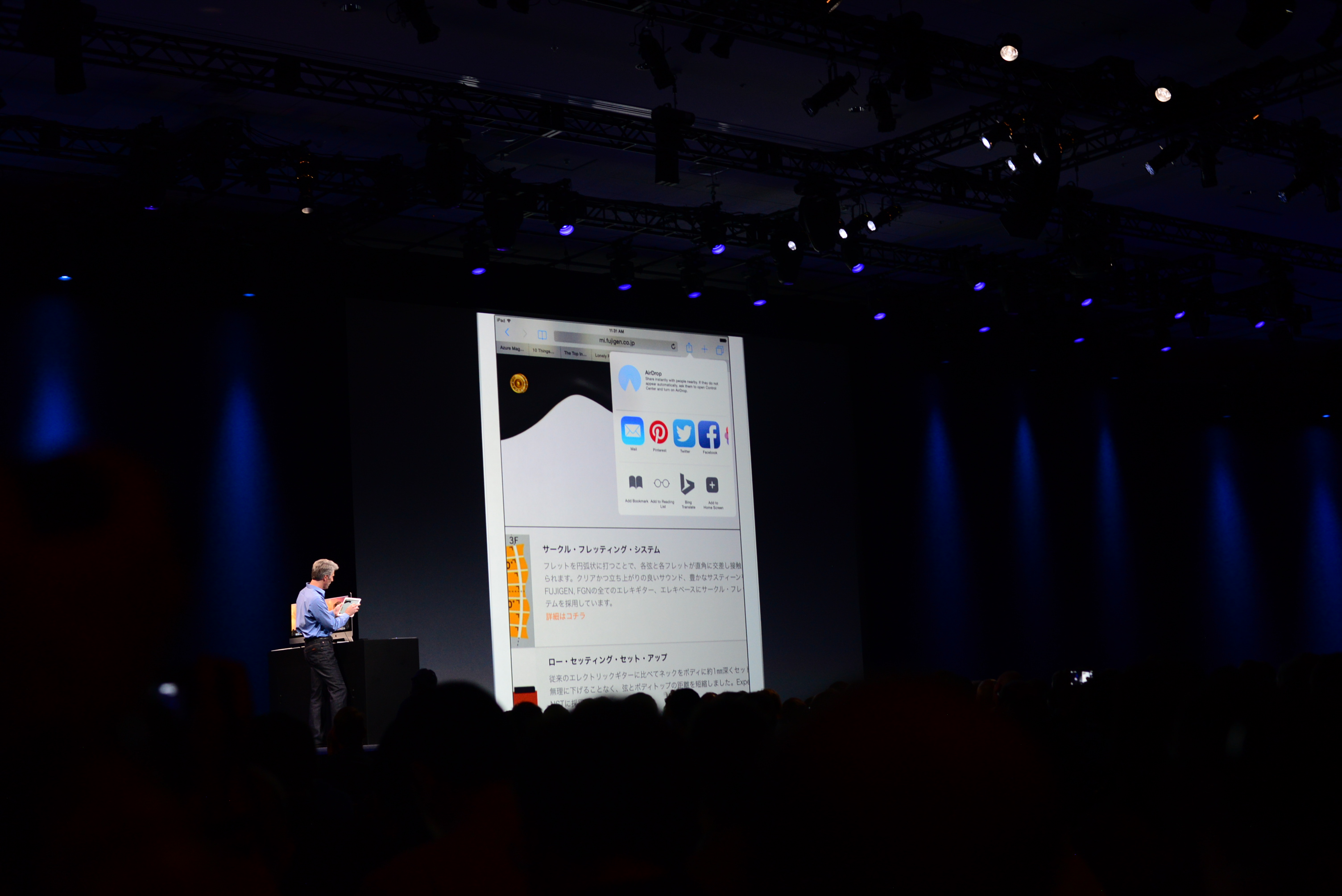
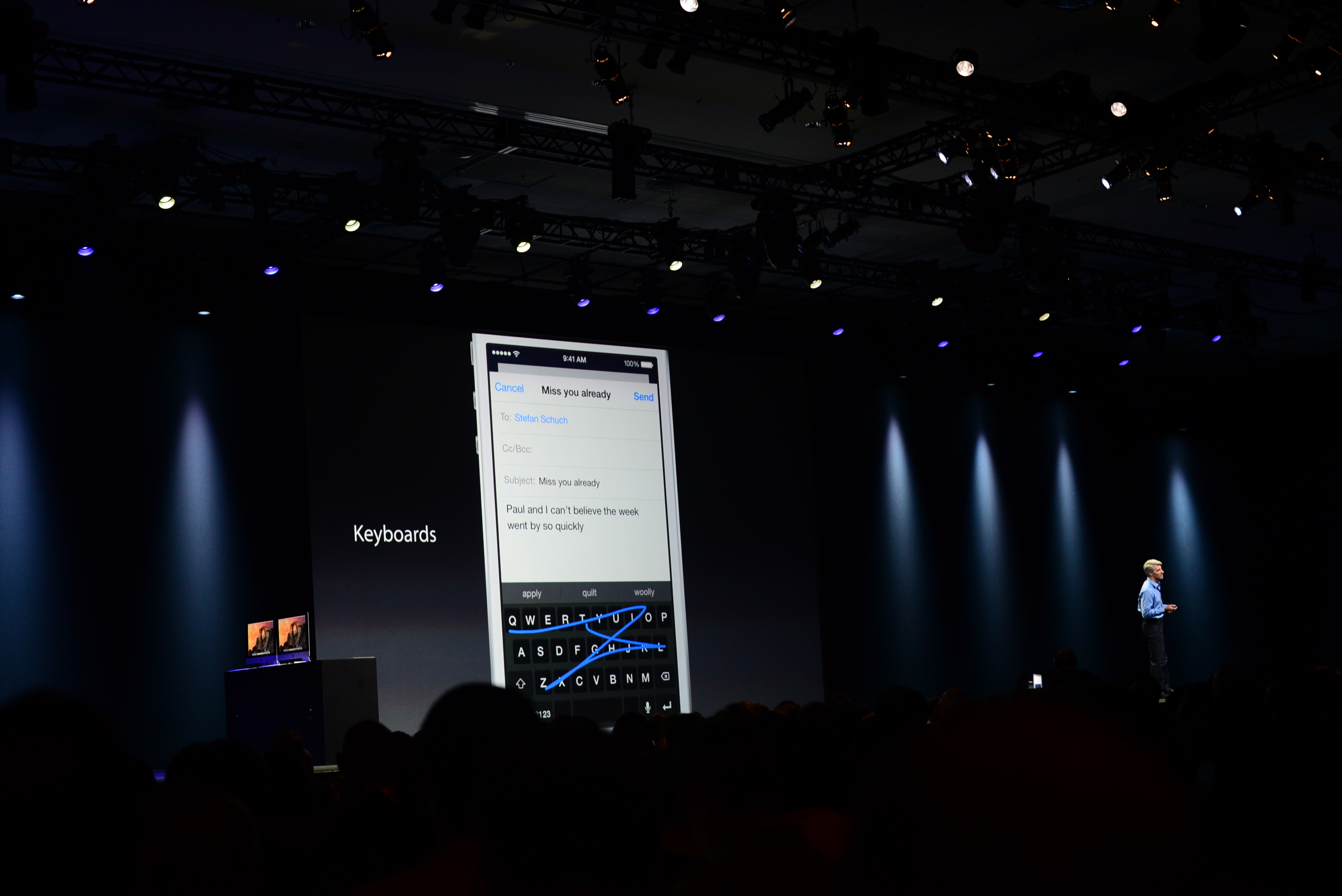

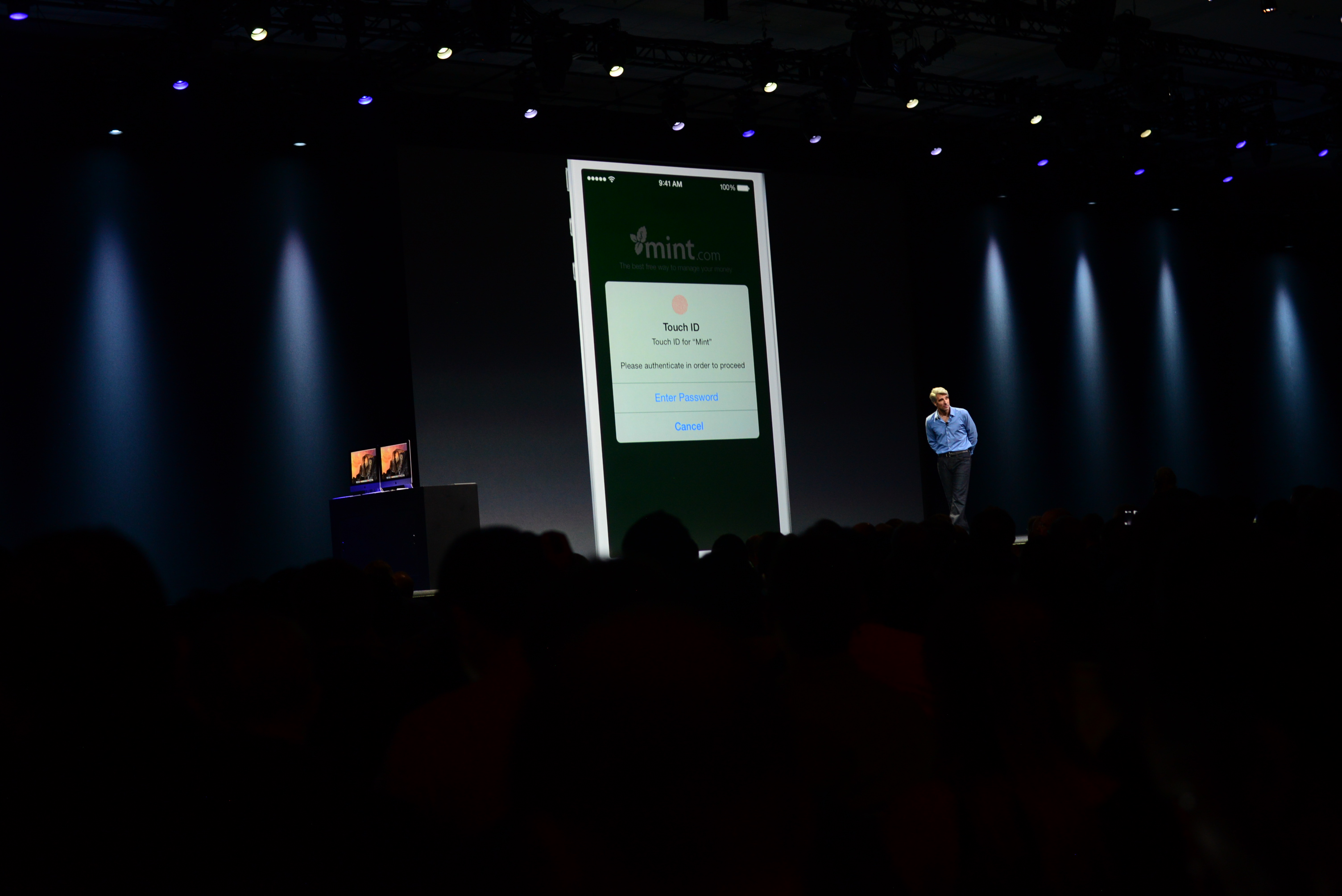
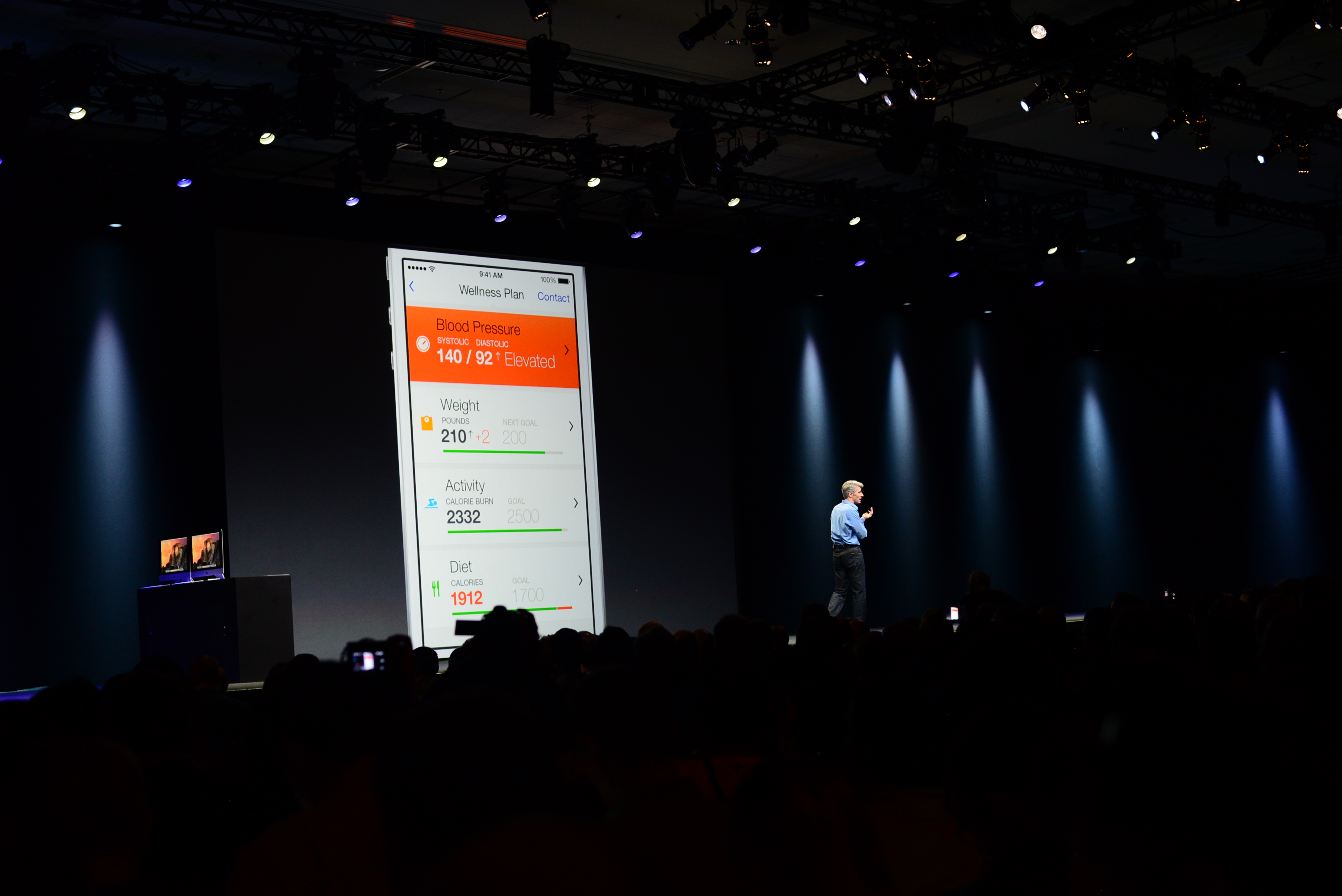
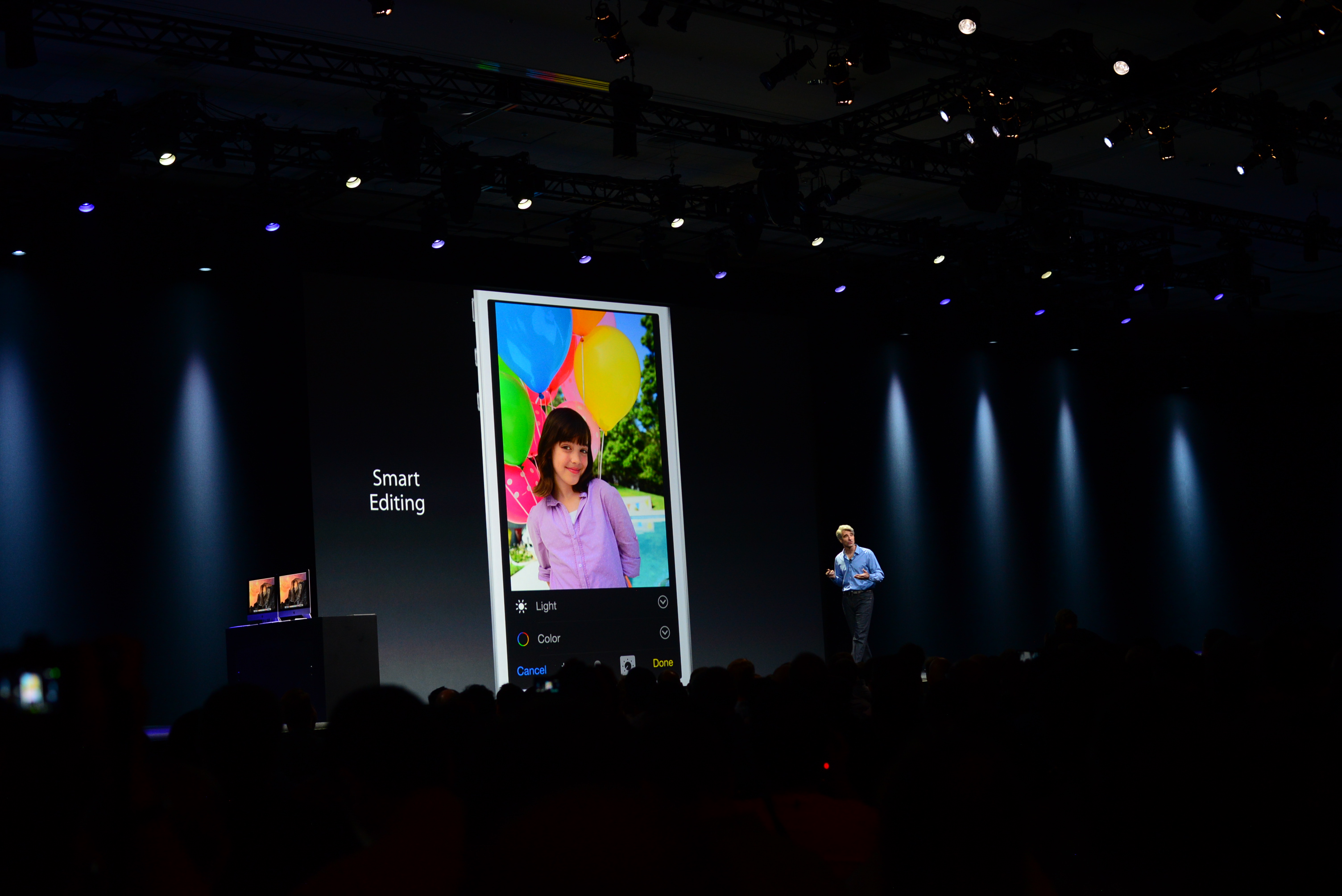
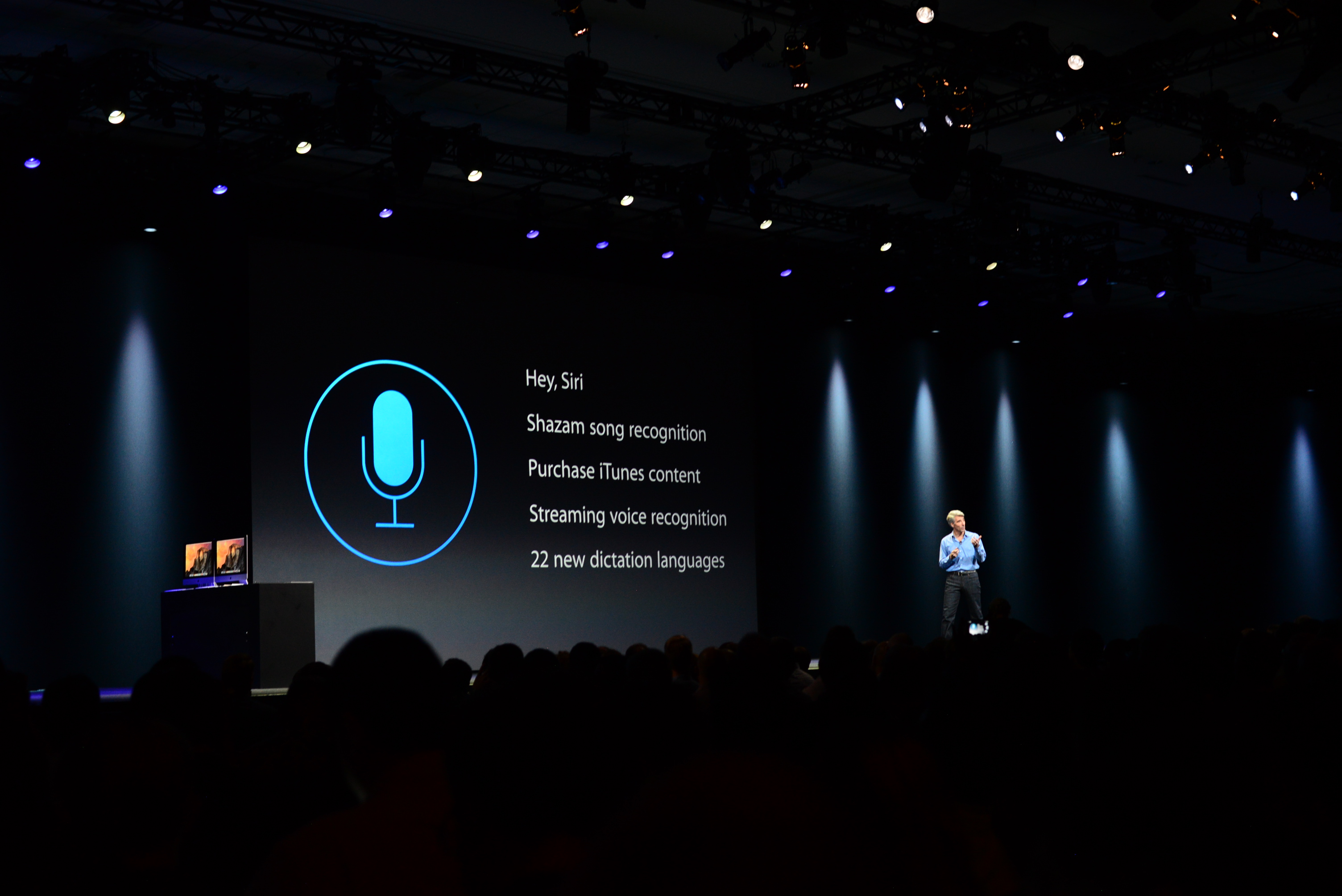
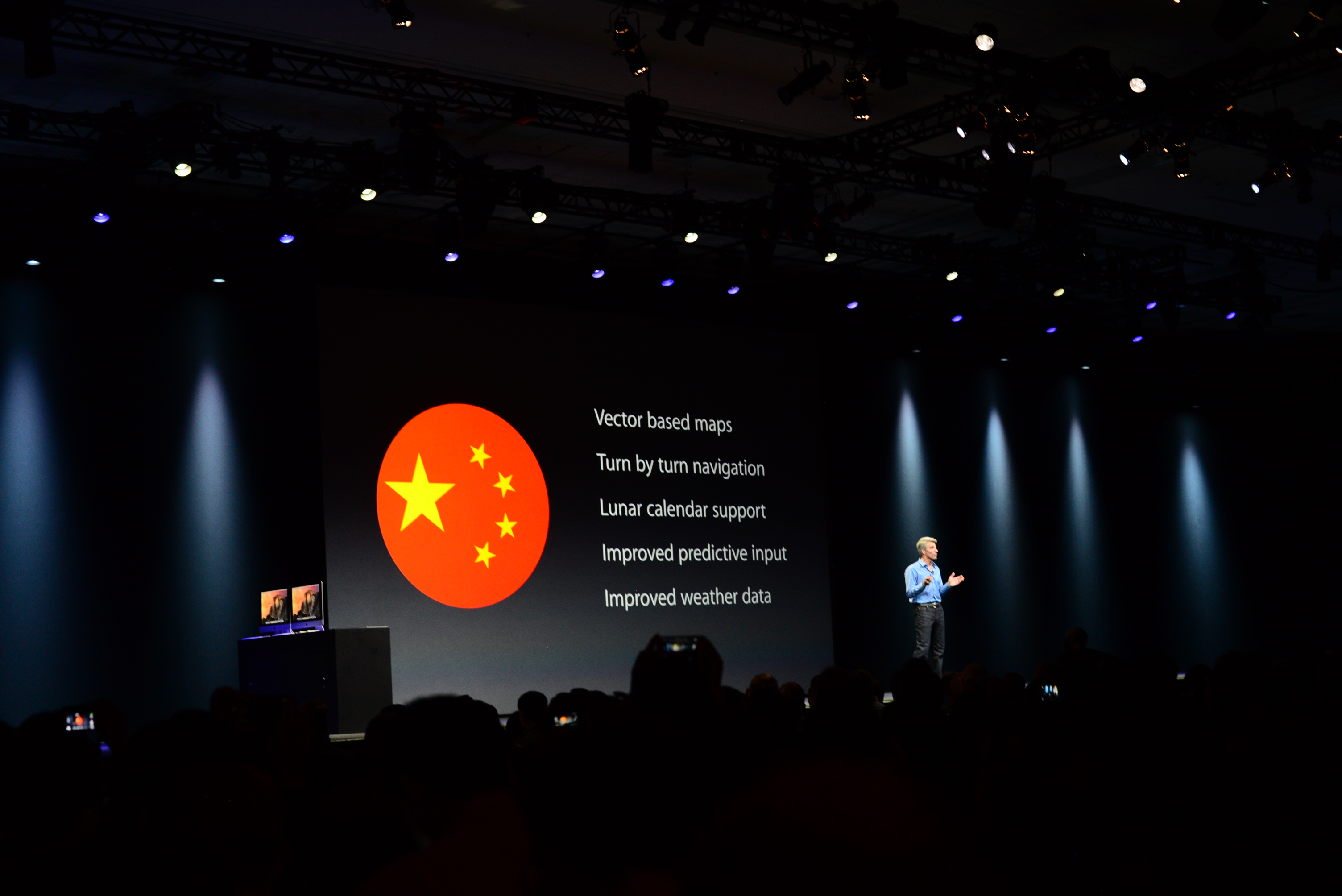

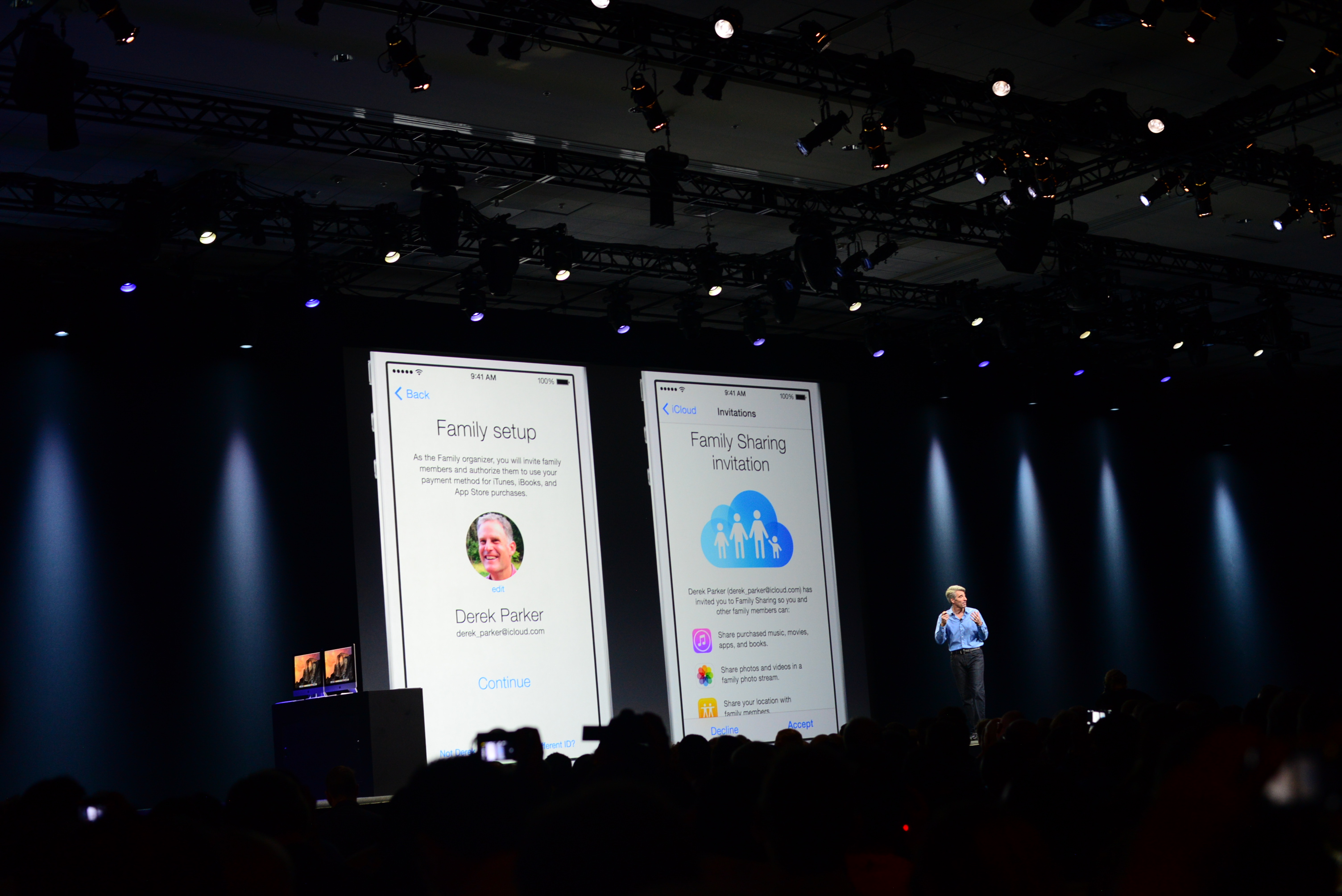
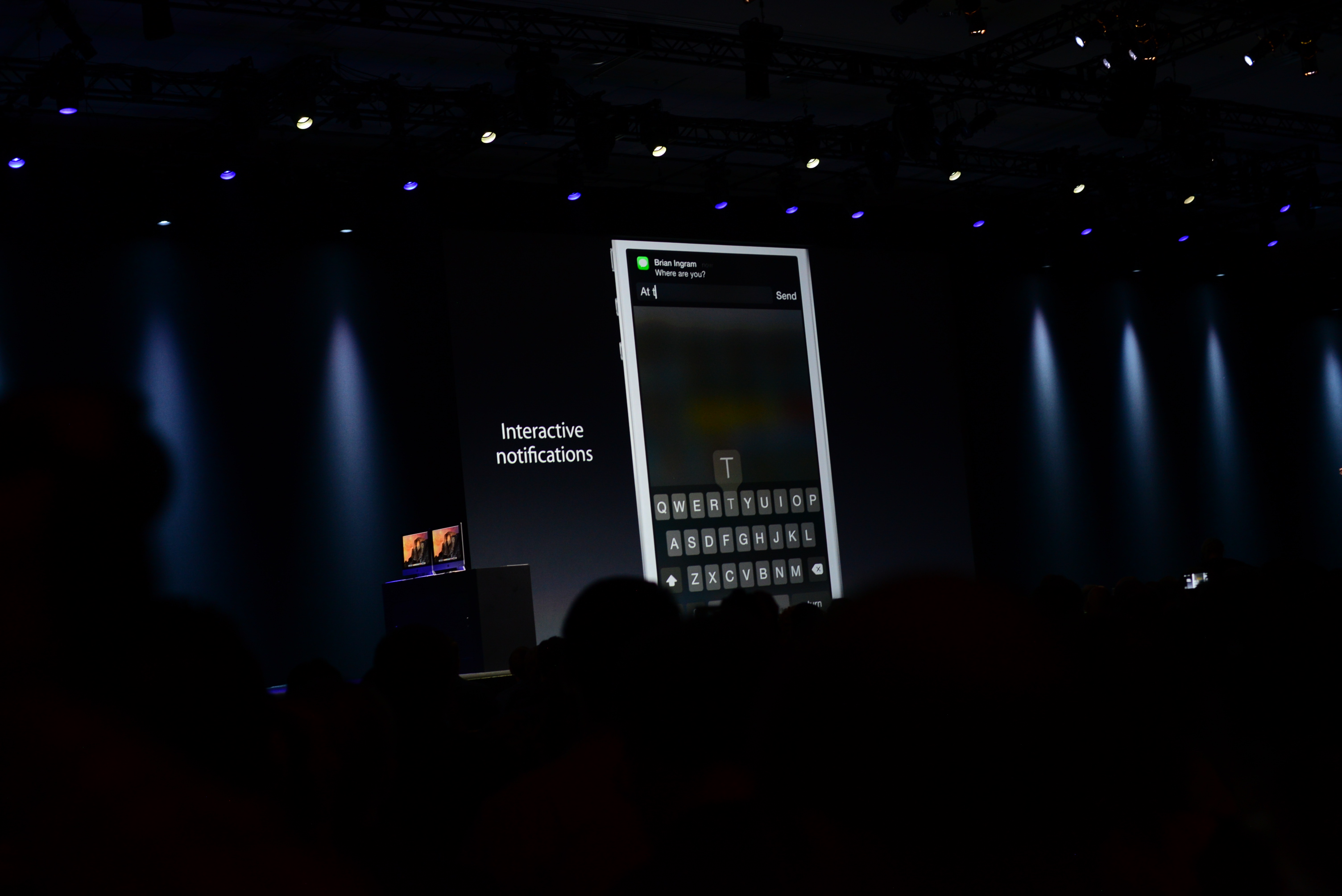
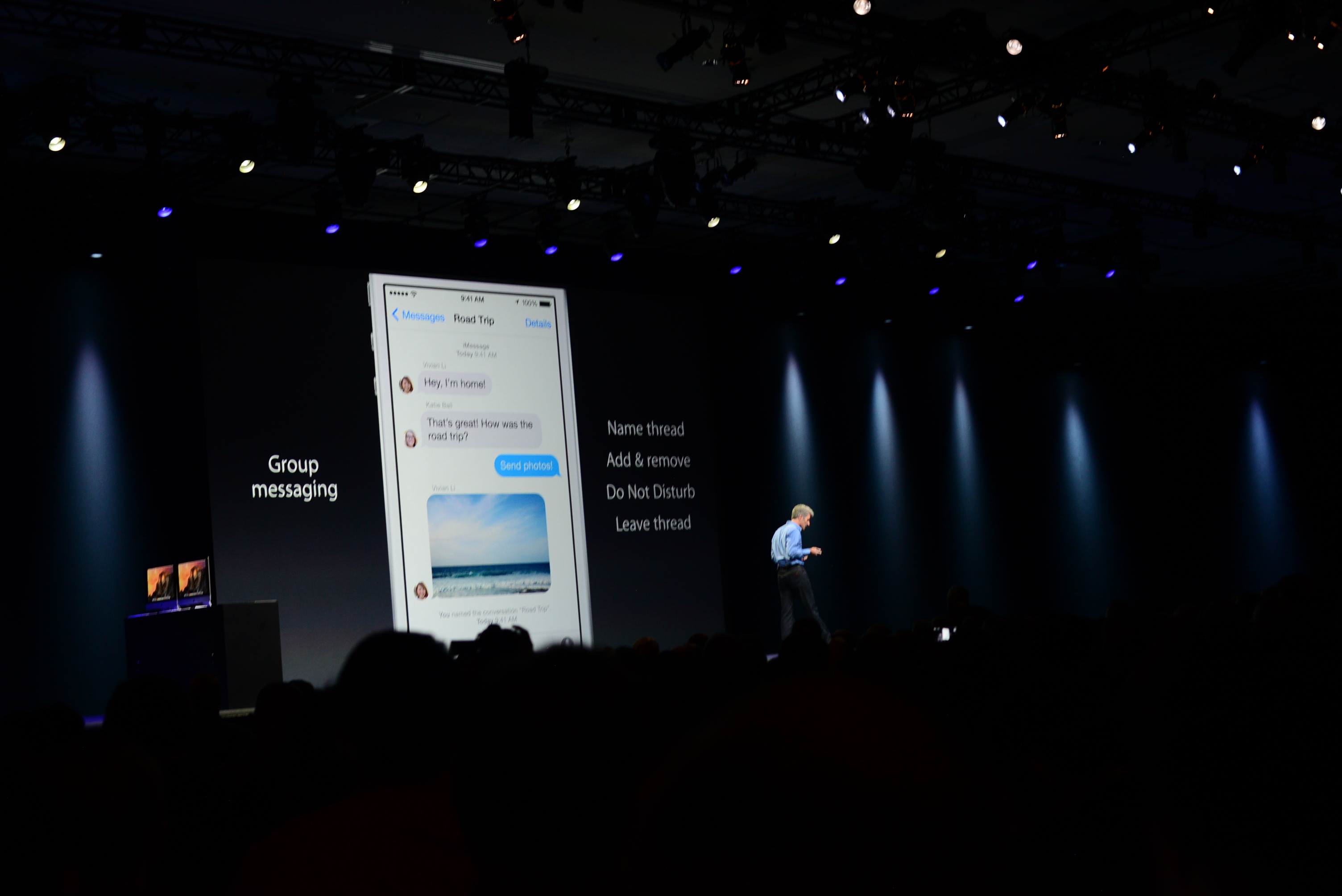

 Quote
Quote









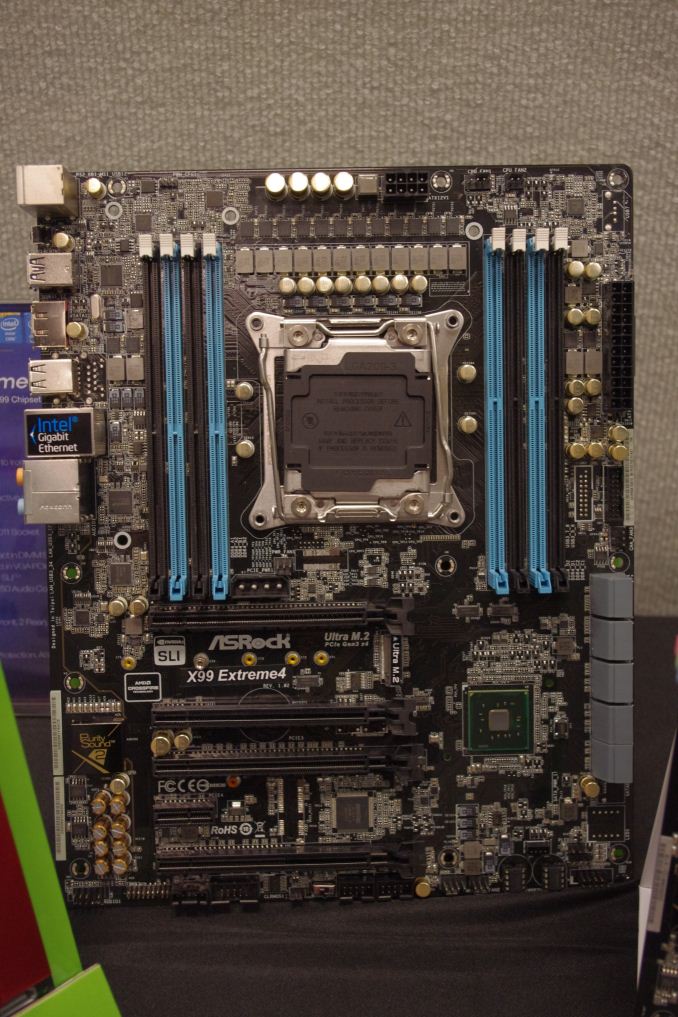
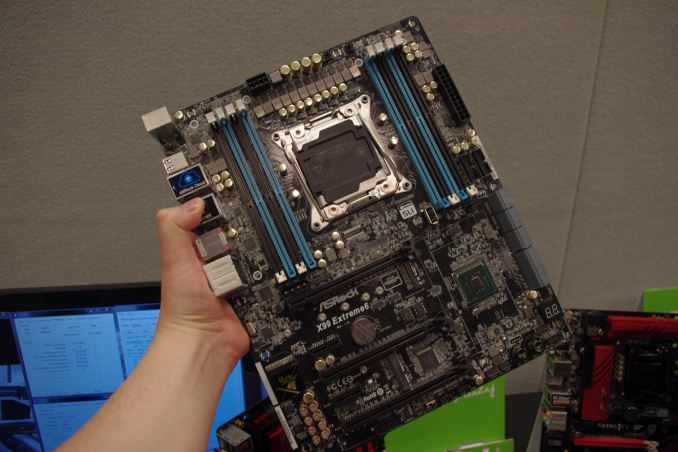











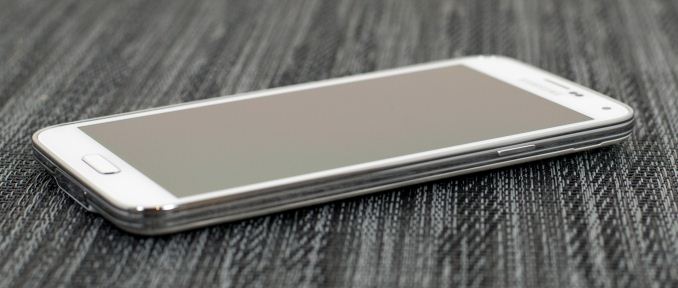
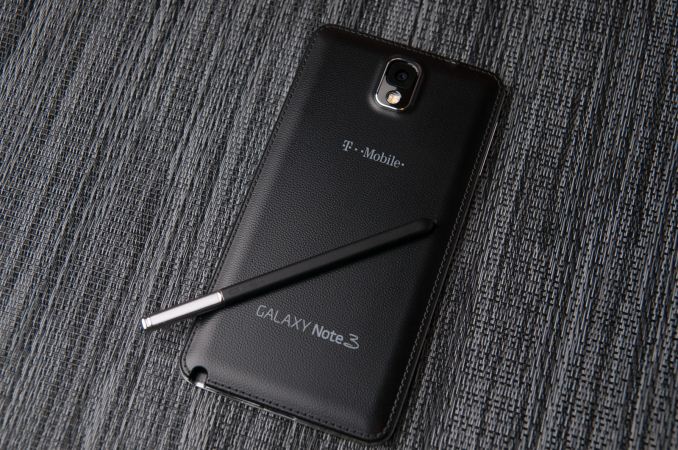
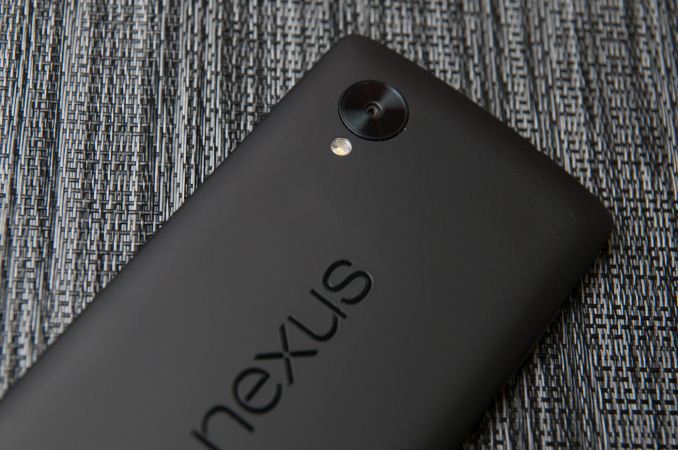
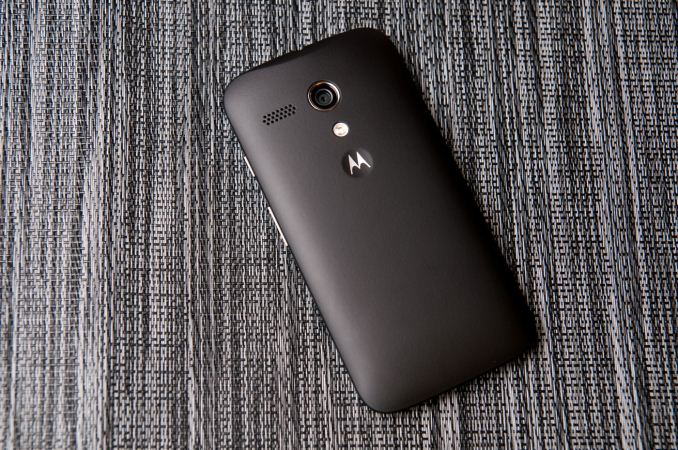

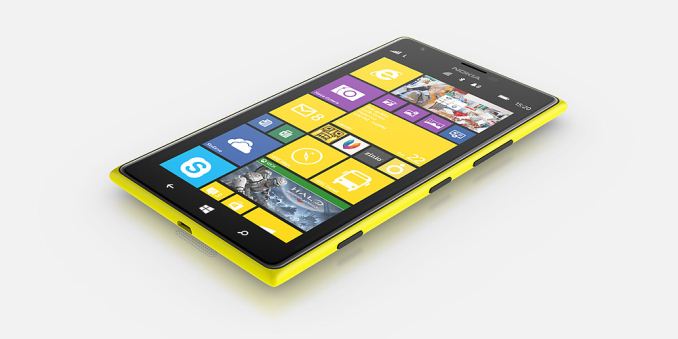
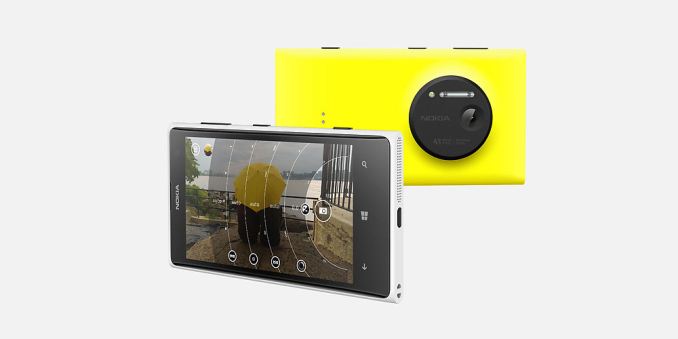
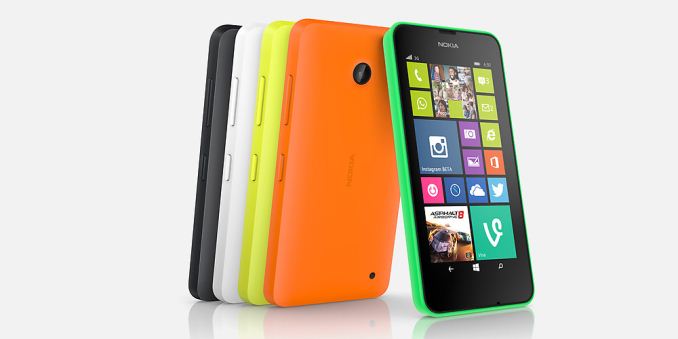

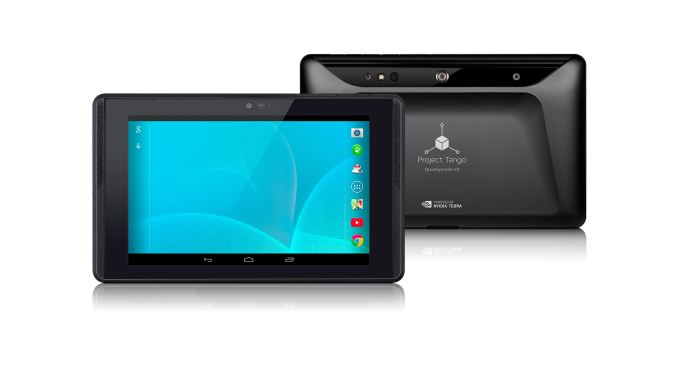
















Bookmarks